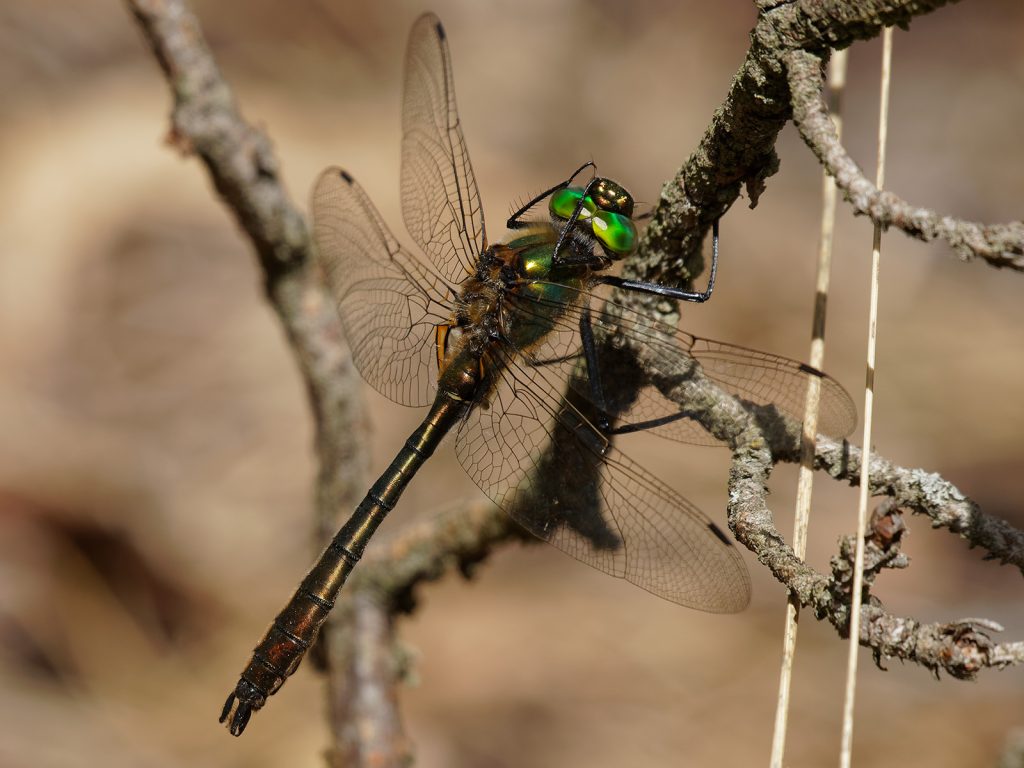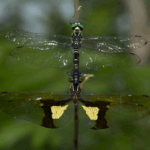Length: 48mm. This species is one of three BritishEmerald dragonflies. It has a downy thorax, apple greeneyes and a metallic green body with a copper sheen.
Male: has a slightly clubbed tail and narrow waist.Female: has a fairly broad body.
Larvae: 22-25mm when fully developed. Spider-like,distinguished by their rounded abdomens, long,striped legs and distinctive black stripe on the side ofthe thorax. The shape and number of mid-dorsal spinesare diagnostic between Emerald dragonfly larvae.
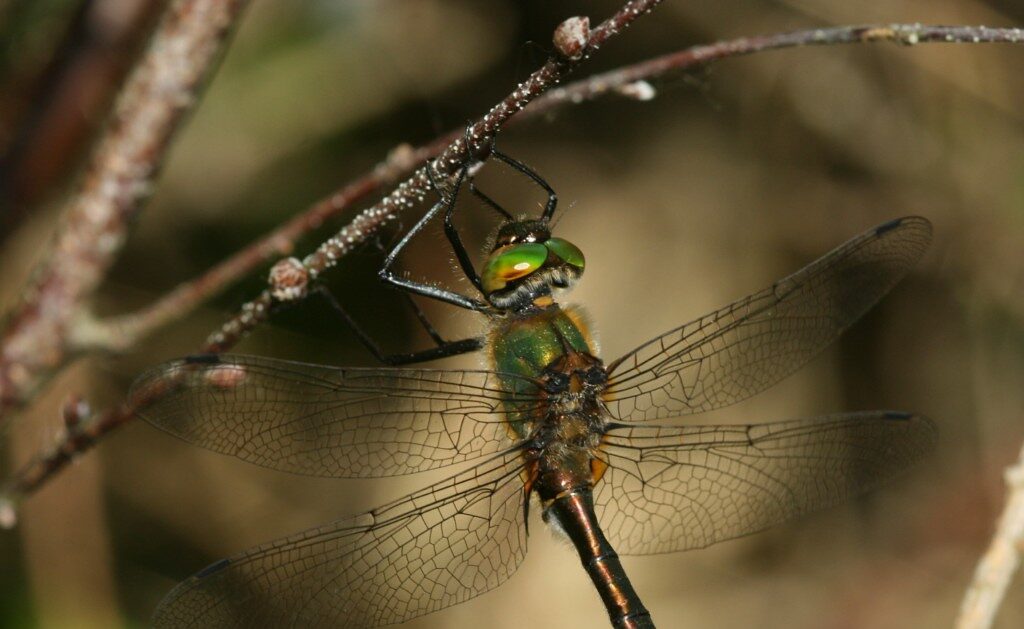
This dazzling dragonfly can be seen darting above tree-lined ponds in certain parts of Britain.
Statistics
Length: 4.8cm
Conservation status
Scarce and local
When to see
April to August (mainly May to July)
Hairy green-copper dragonfly and bright apple green eyes.
Males: Thin waist and club-shaped abdomen.
Females: Thicker abdomen.
The downy emerald is one of three species of emerald dragonfly found in the UK. Although they all have a very limited distribution, the downy emerald is the most widespread, found in scattered locations from southern England to the highlands of Scotland. Downy emeralds are usually encountered around ponds and lakes close to woodland, with some overhanging trees. Their peak flight season is between May and July, and they will take to the wing in cooler, windier conditions than many other dragonflies.
Males patrol the edges of their chosen waterbody, flying fast and low as they search for females. They rarely settle on perches, but often hover for a short while. They’re highly territorial and will regularly clash with other dragonflies that come too close, attacking different species as well as other downy emeralds. After patrolling for a while, they dart off into the trees to feed, returning to the water later on to patrol again.
After mating, females lay their eggs in areas of shallow water with a few submerged plants. They hover above the surface, dipping the end of their body into the water to wash off eggs. Once they’ve hatched, the spider-like larvae live amongst the fallen leaves at the bottom of the pond. They’re ferocious hunters that prey on other aquatic creatures like midge larvae, doing most of their hunting at night. It can take two or three years for them to develop and be ready to emerge as dragonflies.
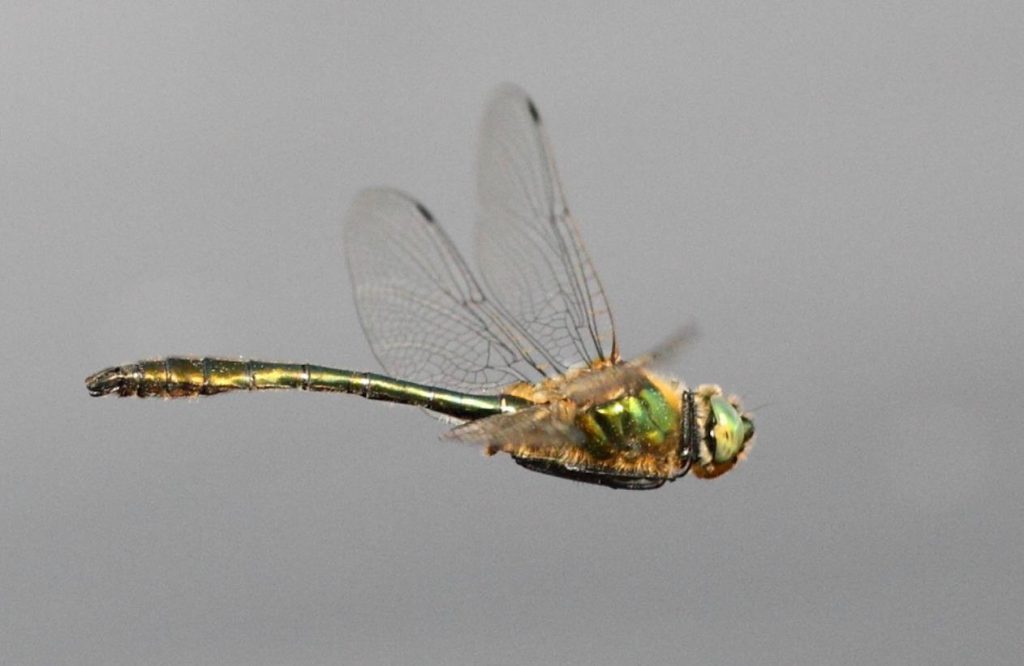
How to identify
A medium-sized, metallic greenish-bronze dragonfly with bright, apple-green eyes. The thorax (the body section behind the head) is covered in dense orange hairs. Males have a thin waist bulging into a club-shaped abdomen, whilst females have a more uniformly chunky abdomen.
The two other emerald species look very similar, but aren’t as hairy as the downy emerald and have more yellow on their face.Distribution
Scattered populations in England, Wales, and Scotland. Most common in southeast England.
The downy emerald (Cordulia aenea) is a species of dragonfly. It is metallic green and bronze in color, and its thorax is coated with fine hairs, hence its name. Like most other emeralds, the downy emerald has bright shiny green eyes. Adults are around 5 cm in length, and are in flight from May through July each year.
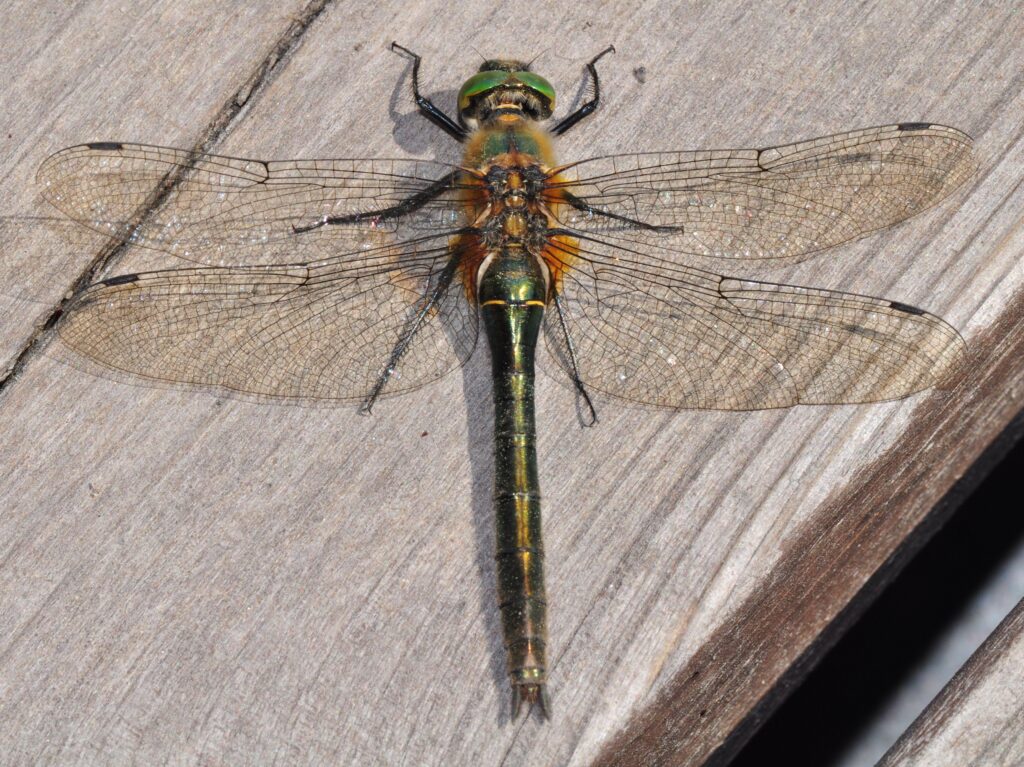
This species lives in woodlands near lakes and ponds; like other dragonflies, it lays eggs in water and its larvae are aquatic. It is distributed throughout most of Europe. Although it has been eliminated from some of its historic native area in Great Britain due to habitat loss, dense populations of the downy emerald can still be found there in spots where its ideal habitat remains.
After the downy emerald young emerge from their eggs, they live for three years at various larval and nymphal stages. They are fully grown adults for only two months, during which this time they mate and the females deposit their eggs back into the water. Female individuals of the Cordulia aenea (C. aenea) species have panoistic ovaries that produce female sex cells, or oocytes. The nucleus of the panoistic oocyte likely contains all the necessary genetic material to develop the oocyte on its own, form the C. aenea egg yolk, and develop the C. aenea embryo.
Distribution
The species has a scattered distribution from Devon tothe Scottish Highlands. It appears to have a strongholdin the south east of England, but evidence suggeststhat the populations in East Anglia, the Shropshire andCheshire meres and on the Hertford Essex borderare declining. It is locally common on the woodedheaths of Surrey and Hampshire, Berkshire, Essex,Sussex, and the New Forest but also occurs in afew localities in Dorset, Devon, the Bristol Channel,Cheshire,Norfolk, Cumbria and north west Scotland.
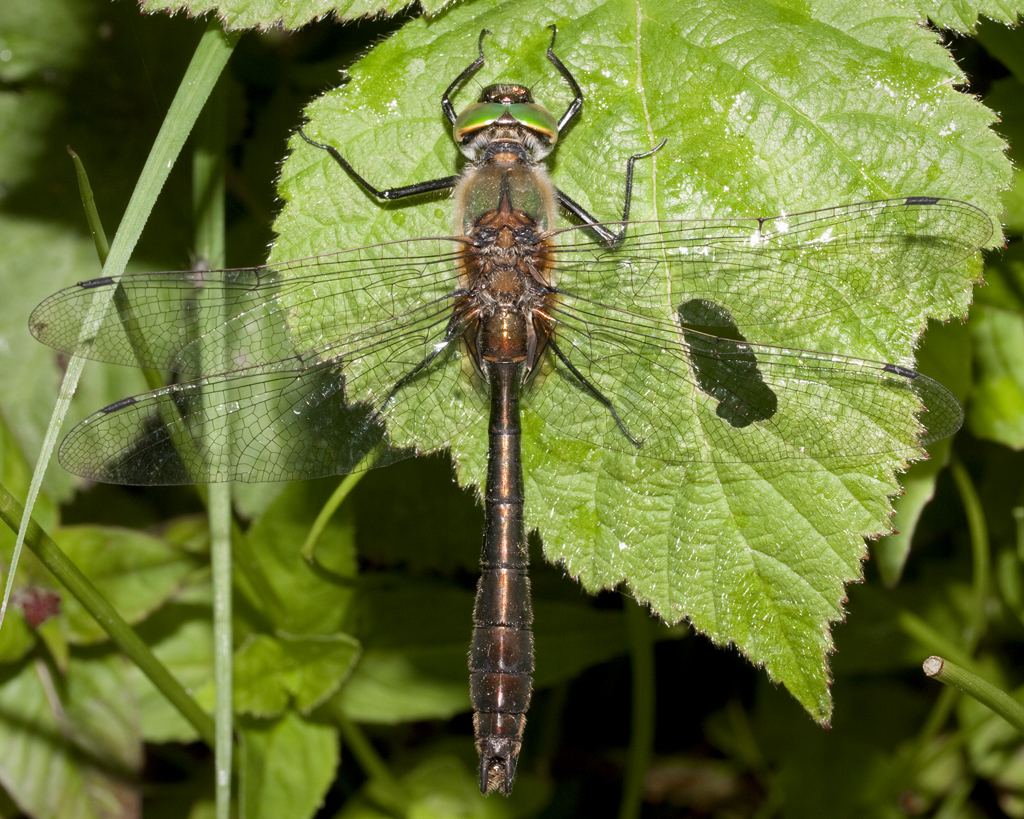
Behaviour
Males are characteristically seen patrolling theshoreline of tree-lined ponds, rarely crossing openwater. They have a characteristically rapid flight,interspersed with fairly prolonged periods ofhovering. In flight, the tip of the abdomen is heldslightly higher than the thorax, giving the species aunique appearance. Females are commonly foundalong woodland rides, although both sexes can befound away from ponds feeding, roosting and mating.Adults appear reluctant to fly out of the woodlandcanopy and move between ponds.
Habitat
Still waterbodies within, or close to, deciduouswoodland with scattered bankside trees, sparsestands of emergent vegetation and a carpet of leaflitter on the pond floor will offer the best conditionsfor breeding. Stands of reedmace are important on‘Parkland’ sites. Ideally a breeding pond will holdpermanent water with a large surface area and a longundulating shoreline with deep, narrow bays. Sectionswith open sunny margins, a moderate accumulation ofleaf-litter and areas of open water with floating-leavedaquatic plants are all required by the larvae and adults.

